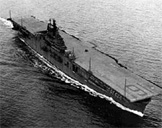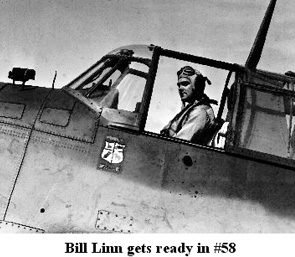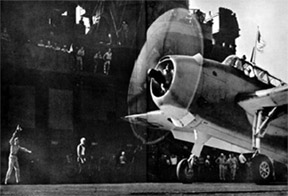|
Fred Gwynn's Chapter 4 |
|||||||||||
 |
|||||||||||
 |
|||||||||||
|
The trips to and from the target of a carrier raid are far from unpleasant. Unless there is an eager admiral aboard, bent on using up all his gasoline and pilots, there is no flying except for "routine patrols." Work in the ready-room consists entirely of a few hours of attack conferences, which seem pretty interesting to all concerned. Generally speaking, you can get in plenty of eating, reading, sun-bathing, and sack-time - the four chief sports on the Navy's hard-hitting combat carriers |
|||||||||||
| But on our first raid, as might be expected, we spent a lot of time just guessing, aloud and to ourselves. The Lexington, with two cruiser carriers and a screen of destroyers, had been ordered to make a hit-and-run raid on Tarawa Atoll in the Gilbert Islands. There were apparently two reasons for this trip, neither of which could be told us at the time. The first must have been to test the strength at Tarawa and the neighboring islands in preparation for the invasion that came two months later in November, when the Marines won one of their greatest (and bloodiest) victories. There had been no carrier strikes in the Gilberts and Marshalls since January 31, 1942, when the Enterprise and the old Yorktown hit them; doubtless we were supposed to soften up Tarawa and at the same time see how the Japanese mustered their defenses in their network of scattered corral atolls. |
 |
||||||||||
 |
|||||||||||
|
in Avenger #66 |
|||||||||||
|
The second reason, which we soon found out, was to test the carriers and their air groups. The Navy officially calls these jaunts "training attacks," even though the target is usually just as tough as any other bastion and just as many pilots and flight crewmen get killed. Our feeling was that any time the Japs are shooting at you and you're shooting at them, you're hardly "training" for anything, but, then, we have been accused of taking a personal view of every cruise we have made. As a matter of fact, no one ever guessed how strong Tarawa was until November, when the Marines watched block-busters bounce off amazing ferro-concrete pill-boxes.
So we were all scared as hell during the week's trip from Pearl to the Gilberts. In the heat of the ensign's bunk-room, where Bill Linn, Newbold Landon, Paul Dana, Wally Larson, and I lived, we memorized the details of Betio Island (the Japs' fortress in the Tarawa Atoll) - the shape of the runway, the location of the anti-aircraft, the probable ammunition dumps, and so on. But more interesting topics took up most of our talking time - how many Jap planes would be in the air, what to do if shot down and captured, and the best way of surviving any emergency water landing. It has been the sad discovery of every aviator in the Pacific that the wind and water currents from Hawaii and Honshu would generally blow a rubber-boat right into Japanese waters and territory - never away from it. I wonder if the slant-heads have ever considered this fact. As a relief to the bunk-room, Bill Linn and I used to go up on the flight deck at night, to enjoy one of the rare treats of carrier war-fare. Here is all the oceanic vastness and silence that has spelled mariners for centuries. If the night is clear, the ancient moon and stars seem to smile sadly and condescendingly on these latest men-'o-war proceeding to transient battles. For this moment there is absolute peace. But then the hum of the never-resting radar up on the mast reminds one that this is no pleasure-cruise, idyllic as a Pacific night may be. And then one begins to wonder how in the name of God he got out here so far from home, so far from home! End of Page 1 of Chapter 4 — Go to Page 2 Page — 1 — 2 — 3 — 4 — This Chapter you may go to Introduction — Table of Contents Chapter — 1 — 2 — 3 — 4 — Epilogue — or Go to the Lexington Stories Cover Page Or Home - Contact Us - Cold War Hist. - 91st SRS Hist. - Stardust 40 Mission Story |
|||||||||||